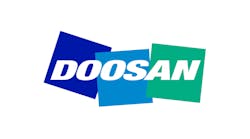The U.S. Environmental Protection Agency and Department of Transportation’s National Highway Traffic Safety Administration are set to mandate cuts in fuel emissions ranging from 10 to 20 percent starting in 2014, for a full range of gas and diesel trucks, both on- and off-highway models. The full impact of the proposal would not be felt until 2018, at which time the vehicle manufacturers would be expected to have raised their average fuel-efficiency rating from 6 to 8 mpg.
The Obama Administration is aiming to reduce greenhouse gas emissions and other pollutants by requiring higher fuel efficiency standards for trucks, buses and heavy-duty vehicles. “This is a transition to more energy efficiency, a transition to lower pollution,” EPA Administrator Lisa Jackson stated in a conference call explaining the changes.
In their announcement, EPA and DOT projected that their comprehensive program will “reduce GHG emissions by about 250 million metric tons and save 500 million barrels of oil over the lives of the vehicles produced within the program’s first five years.”
“These new standards are another step in our work to develop a new generation of clean, fuel-efficient American vehicles that will improve our environment and strengthen our economy,” EPA Administrator Lisa P. Jackson said. “In addition to cutting greenhouse gas pollution, greater fuel economy will shrink fuel costs for small businesses that depend on pickups and heavy duty vehicles, shipping companies and cities and towns with fleets of these vehicles. Those savings can be invested in new jobs at home, rather than heading overseas and increasing our dependence on foreign oil.”
U.S. Transportation Secretary Ray LaHood added that the new standards for trucks and buses also will reduce the cost of transporting freight.
Responding to the announcement, diesel engine and truck manufacturer Navistar International asserted its ongoing fuel-efficiency improvement and GHG reduction initiatives, and affirmed willingness to working with the federal government.
“While it’s too soon to evaluate all elements of the proposed regulations, we are committed to engaging with the EPA and DOT on this issue,” stated Daniel C. Ustian, Navistar chairman, president and CEO. “We look forward to working together with government and industry leaders in the months ahead to implement changes that will benefit the customers and communities we serve with cleaner, more fuel efficient commercial vehicles.”
Another major engine builder, Cummins Inc., expressed support for the regulatory proposal, too.
“For some time now, Cummins has advocated for consistent and responsible regulations that recognize the needs of business, offer clear direction and provide incentives to companies that create innovative technologies as well as jobs in this country,” stated Cummins Engine Business President Rich Freeland. “We look forward to working with the EPA, DOT and other stakeholders in developing the final rule.”
